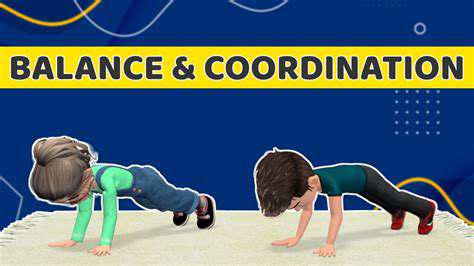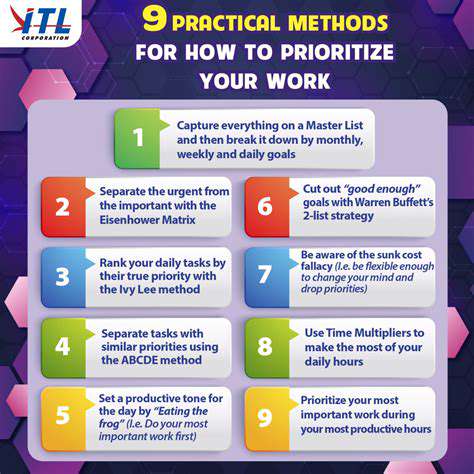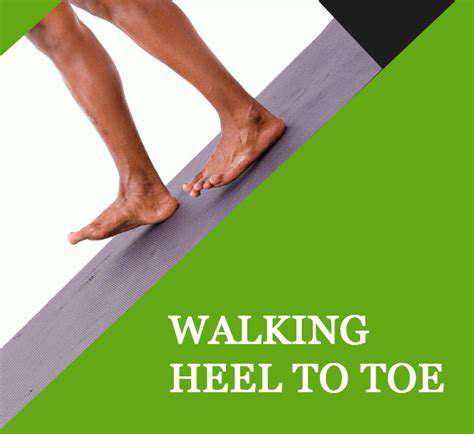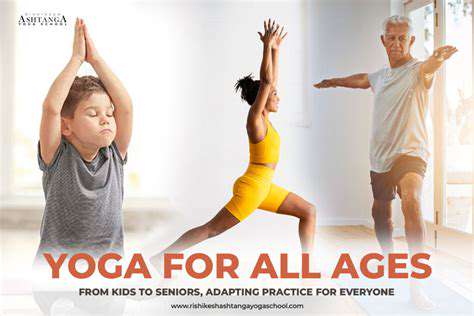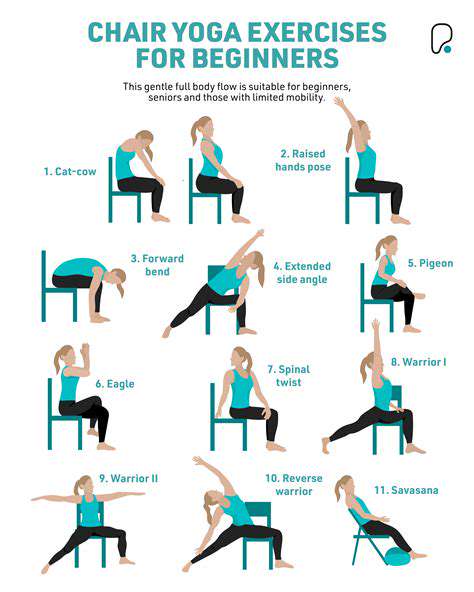Comprehensive Guide to Senior Fall Prevention Exercises
Warm-up Exercises for Enhanced Balance
Before tackling advanced balance exercises, proper warm-up is non-negotiable. Gentle movements like heel-toe walking and side leg swings activate key muscle groups while improving blood circulation. Many physical therapists recommend starting with 5-7 minutes of dynamic movements that simulate your planned workout. This neurological preparation enhances spatial awareness - what experts call proprioception - making subsequent exercises more effective.
Consider these practical warm-up variations:- Marching in place with high knees (30 seconds)- Gentle torso twists with arm swings- Ankle circles in both directionsThese preparatory movements create optimal conditions for balance training while significantly reducing injury risk.
Core Strengthening for Enhanced Stability
The body's central support system - your core - functions as the command center for balance. Targeted core work goes beyond basic crunches; functional exercises like bird dogs and dead bugs teach your body to maintain stability during movement. For beginners, modified planks (knees down) provide excellent core activation without excessive strain.
Progression is key:1. Start with 2-3 sets of 10-second holds2. Gradually increase to 30-second holds3. Add movement variations (like plank shoulder taps)This systematic approach builds durable core strength that translates directly to improved balance.
Single-Leg Exercises for Improved Proprioception
Nothing challenges your balance system quite like single-leg work. These exercises force your nervous system to make constant micro-adjustments, enhancing coordination and reaction time. Begin near a sturdy surface for support, progressing to unsupported stands as ability improves.
Effective progression sequence:- Heel lifts (both feet) → Single-leg heel lifts- Supported single-leg stands → Unsupported stands- Adding head turns or arm movementsThe key is controlled progression - pushing limits while maintaining perfect form. Most balance specialists recommend 2-3 sessions weekly for optimal results.
Remember: Quality trumps quantity in balance training. Two perfect reps with full control outperform ten sloppy ones. Always consult a movement specialist if you experience pain beyond normal muscle fatigue.
Improving Flexibility and Range of Motion: Essential Stretches for Seniors

Enhancing Flexibility Through Targeted Stretches
Flexibility training should mirror balance work in its systematic approach. The most effective routines combine dynamic movements with sustained static holds. For example, begin with gentle leg swings (dynamic) before moving into seated forward folds (static). This dual approach addresses both immediate mobility needs and long-term tissue adaptation.
Key principles:- Never stretch to the point of pain- Breathe deeply throughout each stretch- Focus on major muscle groups dailyConsistent application of these principles yields better results than occasional intense stretching sessions.
Importance of Maintaining a Healthy Weight
Excess weight creates literal drag on your mobility. Every extra pound forces joints to work harder through their range of motion, gradually limiting flexibility. The solution isn't drastic dieting - sustainable nutrition changes paired with regular movement create the ideal environment for improved flexibility.
Practical strategies:- Replace sugary drinks with water or herbal tea- Focus on fiber-rich whole foods- Incorporate strength training to maintain muscle massThis holistic approach supports both weight management and flexibility goals.
The Role of Proper Warm-up and Cool-down
Temperature matters in flexibility work. Cold muscles resist stretching, while warmed tissues become more pliable. A proper warm-up (like marching in place) raises core temperature 1-2 degrees - the sweet spot for safe stretching. Post-workout, cooling down with gentle stretches helps maintain newly gained range.
Sample cooldown sequence:1. Seated forward fold (30 seconds)2. Overhead side stretch (each side)3. Gentle neck rollsThis routine helps prevent next-day stiffness while reinforcing flexibility gains.
Incorporating Flexibility Exercises into Daily Routine
The most successful flexibility programs weave movement into existing habits. Try these practical integrations:- Calf stretches while brushing teeth- Shoulder rolls during TV commercials- Seated twists after mealsThese movement snacks accumulate significant benefits over time without requiring dedicated workout time.
The Impact of Proper Posture on Flexibility
Poor posture creates chronic tension patterns that directly limit flexibility. Forward head posture alone can reduce neck mobility by 30%. Simple awareness exercises can make dramatic differences:
Posture check routine:1. Hourly reset - shoulders down/back2. Chin tucks throughout the day3. Regular standing breaks from sittingConsistent attention to alignment creates the foundation for lasting flexibility improvements.


